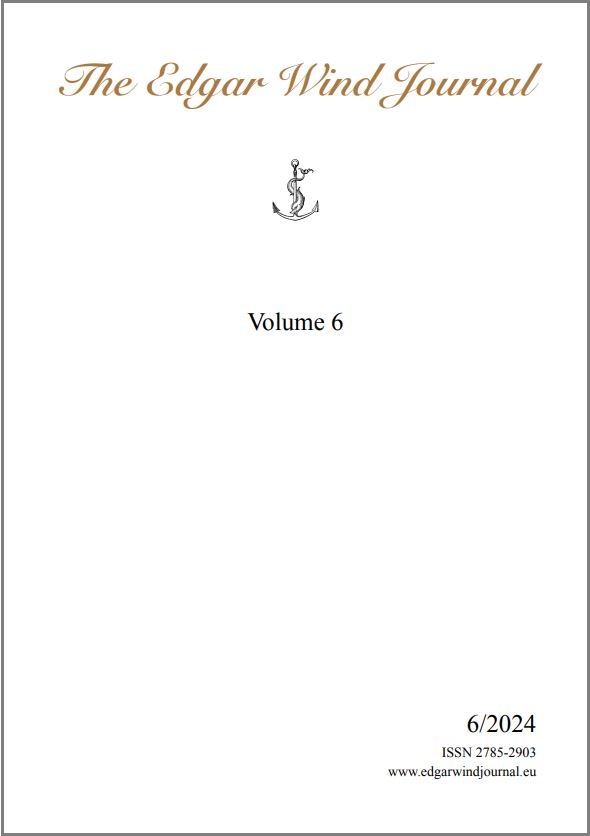Giles Fielke
Monash University, Melbourne
https://orcid.org/0000-0002-4853-5042
Volume 6, April 2024
Abstract
In 2023 a film written and directed by the acclaimed Kaytetye filmmaker Warwick Thornton premiered at the 76th Cannes Film Festival. The New Boy stars Aswan Reid and Cate Blanchett, who also co-produced the film, and draws on Thornton’s experiences as a boarding student at a Benedictine college in New Norcia, near Australia’s west coast. This mid-nineteenth century settlement by Benedictine missionaries is notable in Australian art history for its direct connection between the European colonisation of the continent’s west and the collection of Renaissance-era works of art that – upon first glance – seem to be so remote from their commissioning and histories related to, for example, the workshops of Raphael, Giulio Romano, and Giovanni Francesco Penni. This essay reflects on the theoretical connection between contemporary works on film and the study of art and its histories in Australia, by looking specifically at the influence of Kunst- und Kulturwissenschaft from Aby Warburg and Edgar Wind, and into Australian university departments of art history. In particular I focus on the seminars on method given by Professor Jaynie Anderson in collaboration with Professor Richard Woodfield at the University of Melbourne in 2010, and speculate on the lasting effects of the Comité International d’Histoire de l’Art (CIHA) congress chaired by Professor Anderson in Melbourne in 2008 and titled ‘Crossing Cultures: Conflict, Migration, Convergence’. I argue that the ‘myth of isolation’ identified by Bernard Smith in his 1961 lectures at the University of Queensland still have some bearing on the development of art history in Australia, and that the conflation of images by First Peoples with Christian iconography remains contested in public debates on Australian national symbols such as the Southern Cross, and in our histories more broadly, by introducing the astronomy of First Peoples for the constellations of the southern hemisphere.
Keywords
Art historiography, Australia, Jaynie Anderson, New Norcia, Warwick Thornton
Bibliography
Anderson, Jaynie, ‘Art Historiography in Australia and New Zealand’, introductory essay in Australian Art Historiography, special issue of Journal of Art Historiography, 4.1 (June 2011), guest-edited by Jaynie Anderson, pp. 1–6.
Anderson, Jaynie, ‘Understanding Excessive Brevity: The Critical Reception of Edgar Wind’s Art and Anarchy’, in Edgar Wind: Art and Embodiment, ed. by Jaynie Anderson, Bernardino Branca, and Fabio Tononi (Oxford: Peter Lang, 2024), pp. 353–84.
Anderson, Jaynie, Bernardino Branca, and Fabio Tononi (eds), Edgar Wind: Art and Embodiment (Oxford: Peter Lang, 2024).
Assmann, Jan, ‘Collective Memory and Cultural Identity’, trans. by John Czaplicka, New German Critique, 65 (1995), pp. 125–33, <https://doi.org/10.2307/488538>.
Bhathal, Ragbir, Aboriginal Astronomy (Sydney: ARI, 2010).
Campbell, Thomas P., Tapestry in the Renaissance: Art and Magnificence (New York: Metropolitan Museum of Art, 2002).
Cavadini, Alessandro, and Carolyn Strachan, ‘Two Laws: A Filmmaking Journey’, Screening the Past, 31 (August 2011): Cinema Between Media, <http://www.screeningthepast.com/issue-31-dossier-u-matic-to-youtube/two-laws-a-filmmaking-journey/>.
di Rosso, Jason, ‘Warwick Thornton on The New Boy and Christopher McQuarrie and Cast from Mission Impossible – Dead Reckoning’, on The Screen Show (Sydney: ABC Radio National, 6 July 2023), <https://www.abc.net.au/listen/programs/the-screen-show/warwick-thornton-the-new-boy-mission-impossible/102499838>.
Didi-Huberman, Georges, ‘Artistic Survival: Panofsky vs. Warburg and the Exorcism of Impure Time’, trans. by Vivian Rehberg and Boris Belay, Common Knowledge, 9.2 (2003), pp. 273–85.
Eagle, Mary, ‘Multiple Contexts in the First Decades of the Twentieth Century’, Australian Art Historiography, special issue of Journal of Art Historiography, 4.1 (June 2011), guest-edited by Jaynie Anderson, pp. 1–56.
Fielke, Giles Simon, ‘The Image out of History: Ben Russell’s Let Each One Go Where He May and Cultural Memory’, International Journal of the Image, 4.4 (2014), pp. 93–102.
Gombrich, E.H., Letter to the editor, London Review of Books, 6.6 (5 April 1984), <https://www.lrb.co.uk/the-paper/v06/n05/charles-hope/naming-the-graces>.
Hope, Charles, ‘Naming the Graces’, London Review of Books, 6.5 (15 March 1984), and related letters, <https://www.lrb.co.uk/the-paper/v06/n05/charles-hope/naming-the-graces>.
Lamers, Han, Afterlife of Antiquity: Anton Springer (1825–1891) on the Classical Tradition, (Leuven: Peeters Publishers, 2019).
Michaud, Philippe-Alain, Aby Warburg and the Image in Motion, trans. by Sophie Hawkes (New York: Zone Books, 2004).
Morieson, John, Stars over Tyrrell: The Night Sky Legacy of the Boorong (Sea Lake, Victoria: Sea Lake Historical Society, 2002).
Morieson, John, ‘The Night Sky of the Boorong: Partial Reconstruction of a Disappeared Culture in North-West Victoria’ (MA thesis, Australian Centre, University of Melbourne, 1996), <http://www.aboriginalastronomy.com.au/wp-content/uploads/2018/05/Morieson_Thesis.pdf>.
The New Boy, dir. by Warwick Thornton (Melbourne: Village Roadshow, 2023), viewed 15 April 2024 on Binge.
Palmer, Sheridan, Centre of the Periphery: Three European Art Historians in Melbourne (Melbourne: Australian Scholarly Publishing, 2008).
Panofsky, Erwin, Studies in Iconology: Humanistic Themes in the Art of the Renaissance (1939) (Oxford: Icon Editions, 1972).
Smith, Bernard, ‘The Myth of Isolation’ (1961), in Antipodean Perspective: Selected Writings of Bernard Smith, ed. by Rex Butler and Sheridan Palmer, (Melbourne: Monash University Press, 2018), pp. 77–87.
Stiegler, Bernard, Technics and Time, 1: The Fault of Epimetheus, trans. by Richard Beardsworth and George Collins (Stanford: Stanford University Press, 1994).
Warburg, Aby, ‘The Entry of the Idealising Classical Style in the Painting of the Early Renaissance’ (1914), reprinted in Art History as Cultural History, ed. by Richard Woodfield (Amsterdam: G+B Arts International, 2001), pp. 7–31.
We Don’t Need a Map, dir. by Warwick Thornton (Sydney: Barefoot Communications, NITV, Cutting Edge, Brendan Fletcher, 2017), viewed 12 June 2024 on SBS On Demand.
Wind, Edgar, ‘On a Recent Biography of Warburg’, in Edgar Wind, The Eloquence of Symbols: Studies in Humanistic Art, ed. by Jaynie Anderson (Oxford: Oxford University Press, 1983), pp. 106–13.
Woodfield, Richard, ‘Warburg’s “Method”’, in Art History as Cultural History, ed. by Richard Woodfield (Amsterdam: G+B Arts International, 2001), pp. 259–93.
The Edgar Wind Journal 6: 66-78, 2024
DOI: 10.53245/EWJ-000030
Copyright: © 2024 G.Fielke. This is an open access, peer-reviewed article published by Bernardino Branca
